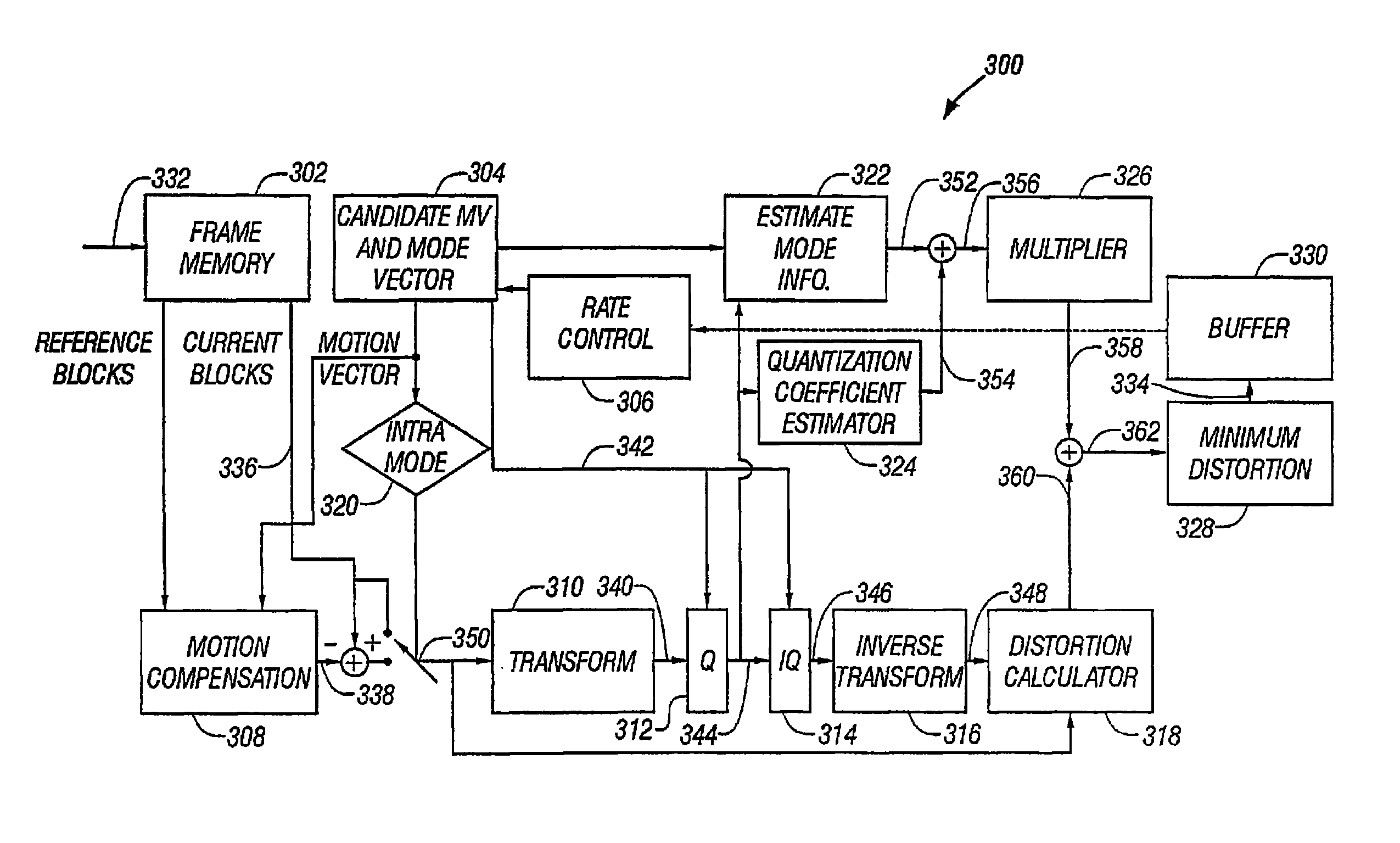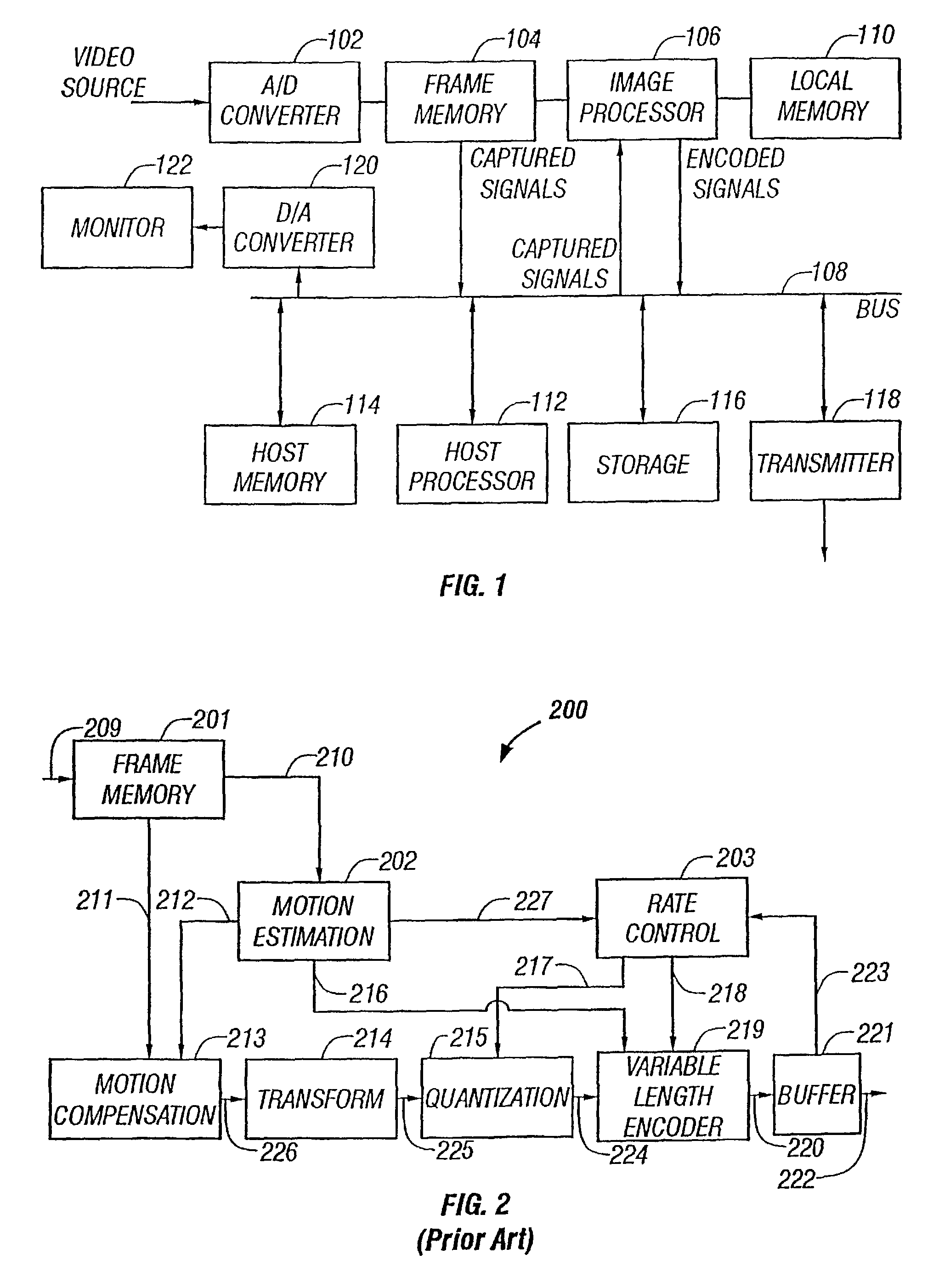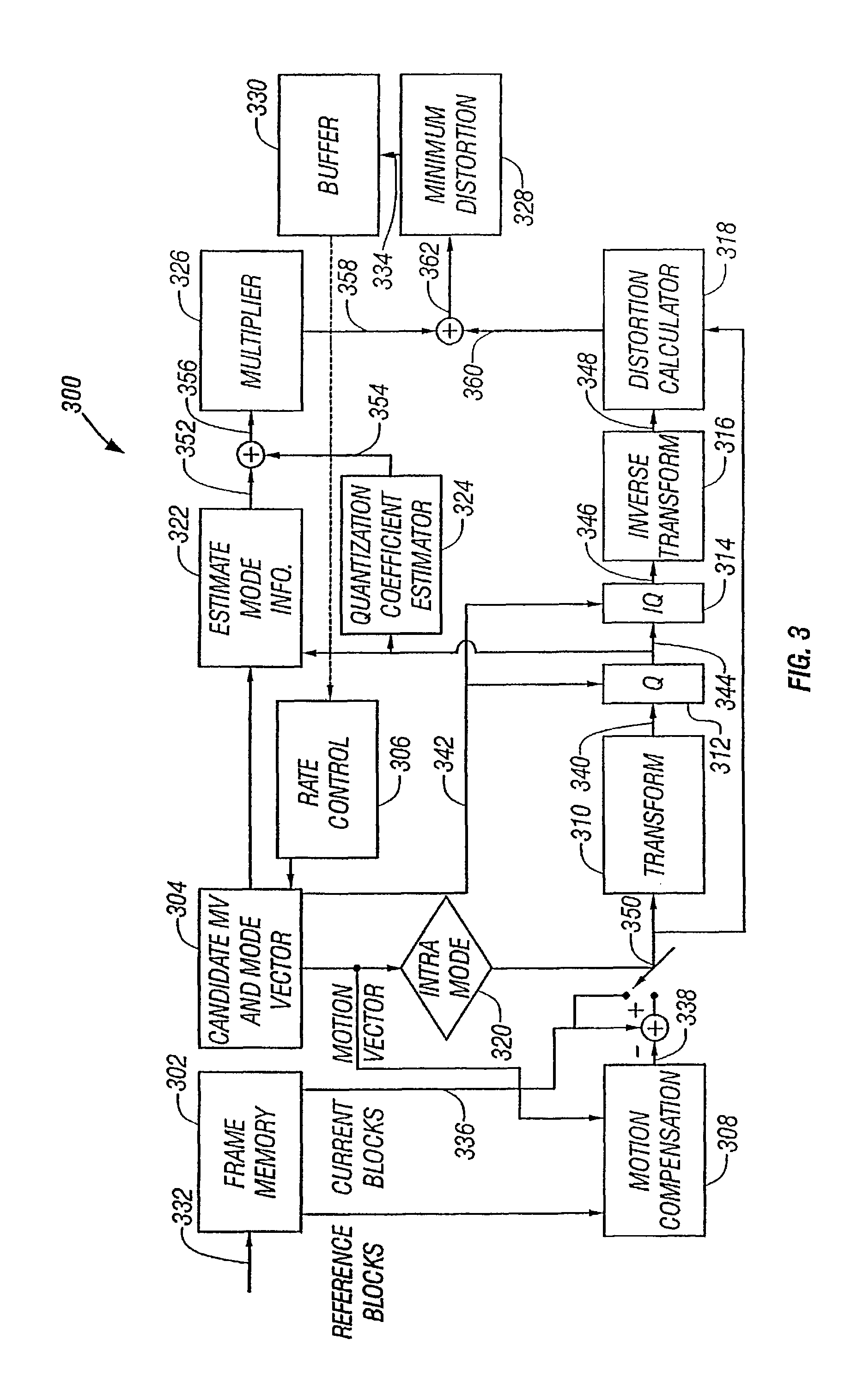Optimal encoding of motion compensated video
a technology of motion compensation and video encoding, applied in the field of video encoding, can solve the problems of inability to move these large streams of video data across digital networks or phone lines, and require a large volume of data to describe one pixel, so as to reduce time delay
- Summary
- Abstract
- Description
- Claims
- Application Information
AI Technical Summary
Benefits of technology
Problems solved by technology
Method used
Image
Examples
Embodiment Construction
[0020]As the present invention may be applied in connection with an encoder meeting the industry standards, some pertinent aspects of standard compression algorithms will be reviewed. It is to be noted that the invention can be applied to video coding algorithms which share some of the following features.
[0021]It will be understood that the compression of any data object, such as a page of text, an image, a segment of speech, or a video sequence, can be broken into a series of steps, including 1) decomposing the object into a collection of tokens; 2) representing the tokens by binary strings which have minimal length in some sense; and 3) concatenating the strings in a well-defined order. Steps 2 and 3 are lossless, i.e., the original data is faithfully recoverable upon reversal. Step 1 can be either lossless or lossy in general. Most video compression schemes are lossy because of stringent bit-rate requirements. A successful lossy compression algorithm eliminates redundant and irre...
PUM
 Login to View More
Login to View More Abstract
Description
Claims
Application Information
 Login to View More
Login to View More - R&D
- Intellectual Property
- Life Sciences
- Materials
- Tech Scout
- Unparalleled Data Quality
- Higher Quality Content
- 60% Fewer Hallucinations
Browse by: Latest US Patents, China's latest patents, Technical Efficacy Thesaurus, Application Domain, Technology Topic, Popular Technical Reports.
© 2025 PatSnap. All rights reserved.Legal|Privacy policy|Modern Slavery Act Transparency Statement|Sitemap|About US| Contact US: help@patsnap.com



